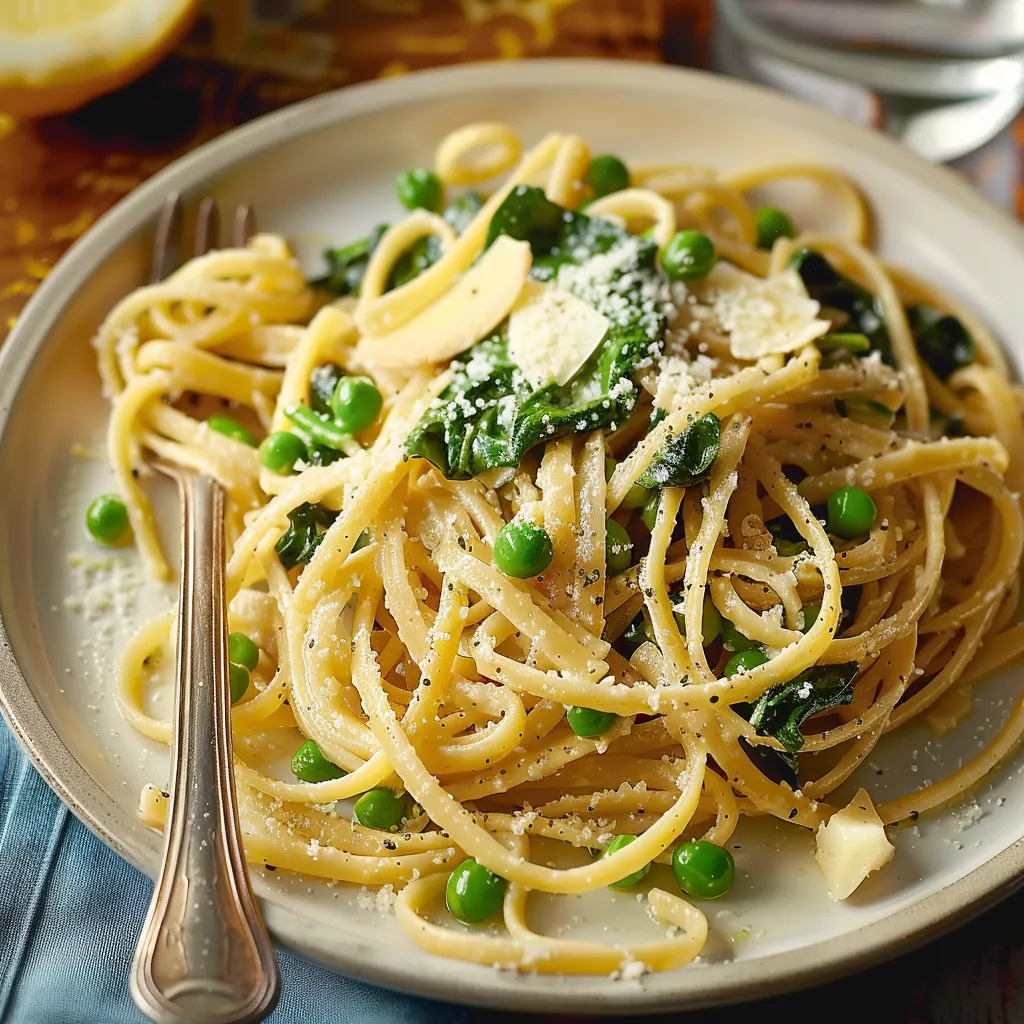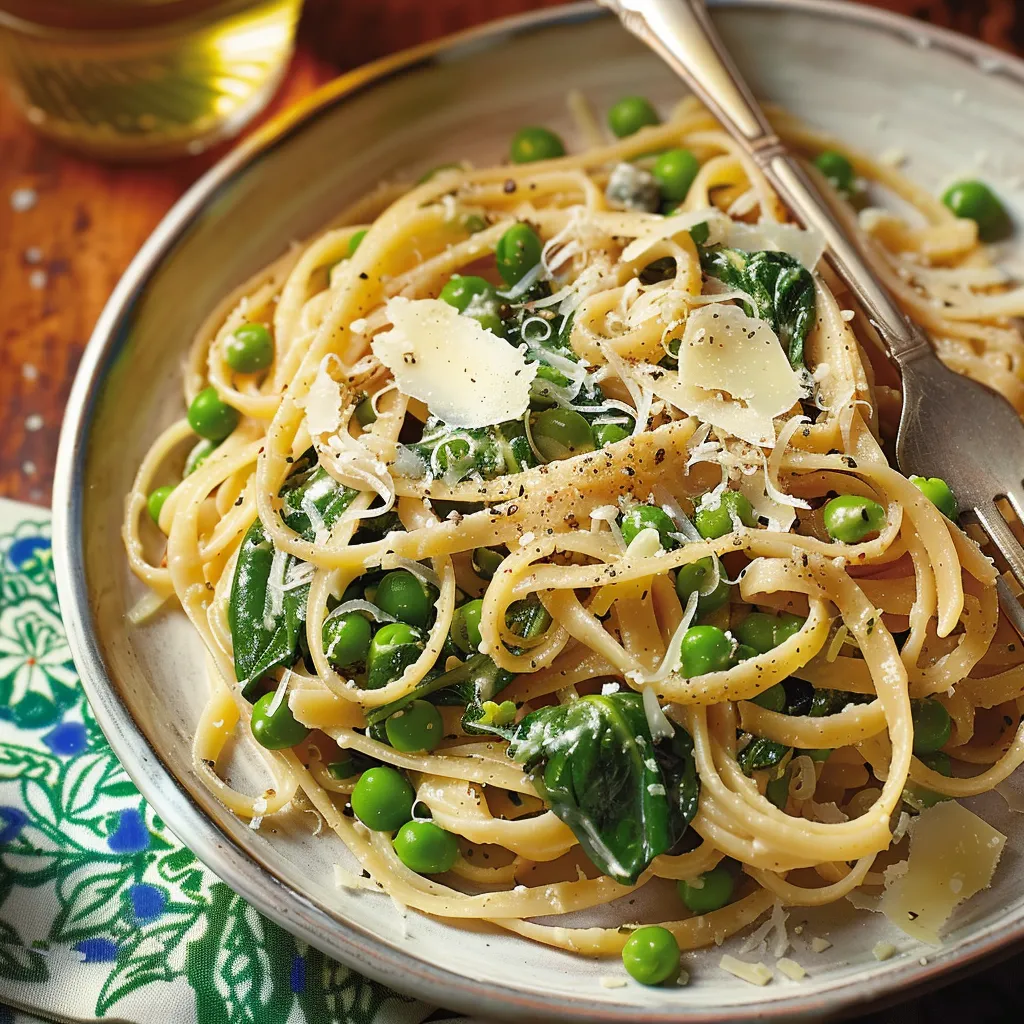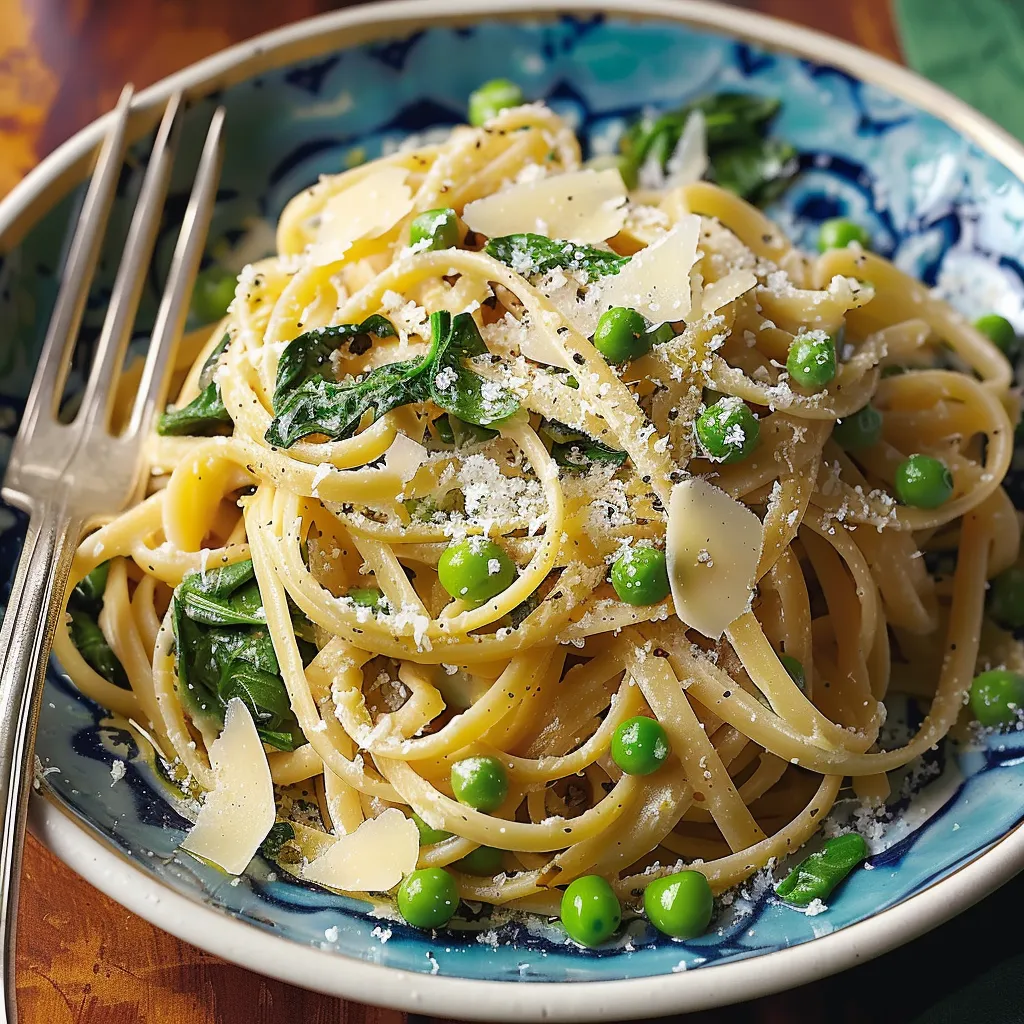 Pin to Favorites
Pin to Favorites
This lemony linguine with spring vegetables transforms simple ingredients into a vibrant, one pot meal that captures the essence of spring on your plate. The magic happens as the pasta cooks directly with the other ingredients, creating a silky sauce from the starches that release during cooking.
I discovered this technique during a particularly busy spring when I was craving something fresh but had no patience for multiple pots and pans. Now it's my go to meal when the farmers market first displays those tender spring vegetables.
Ingredients
- Whole wheat linguine: Brings a nutty depth and extra nutrition compared to regular pasta while still maintaining that perfect chew
- Garlic: Thinly sliced instead of minced allows for gentle infusion throughout the cooking process without becoming bitter
- Frozen artichoke hearts: Provide earthy tenderness without the fuss of preparing fresh ones, look for packages without added seasonings
- Mature spinach: Offers more robust flavor than baby spinach and holds up better during cooking, choose bunches with crisp deep green leaves
- Fresh or frozen peas: Burst with natural sweetness, fresh peas are worth the splurge in springtime if you can find them
- Parmesan cheese: Authentic Parmigiano Reggiano makes a noticeable difference with its complex umami notes
- Lemon zest and juice: The backbone of this dish providing bright acidity, always zest before juicing for maximum yield
Step-by-Step Instructions
- Pasta Base:
- Combine the pasta, garlic, salt and pepper in a large pot with water. This unusual method of cooking pasta directly in its sauce creates an intensely flavored starchy base that will become silky smooth. The limited water amount means the starches concentrate rather than washing away. Boil for exactly 8 minutes, stirring often to prevent sticking—this is slightly less than package directions because the pasta will continue cooking.
- Vegetable Addition:
- Add the artichokes, spinach and peas directly to the partially cooked pasta. The frozen vegetables will cool down the cooking temperature slightly, which helps prevent overcooking the pasta. The remaining cooking liquid will steam and soften the vegetables while the pasta finishes cooking, about 2 to 4 minutes until pasta is al dente and water has reduced to a creamy consistency with just a small amount remaining.
- Finishing Touches:
- Remove from heat before adding the enriching ingredients. Stir in half the cheese, half and half, and all the lemon components. The residual heat melts the cheese and creates a silky sauce without risk of breaking or curdling. The 5 minute resting period is crucial, allowing the sauce to thicken and flavors to marry. Stir occasionally during this time to help the thickening process.
 Pin to Favorites
Pin to Favorites
The lemon in this dish holds a special place in my heart. My grandmother always kept a lemon tree in her sunroom, and the scent of zesting a lemon instantly transports me to her kitchen. She taught me that when a dish tastes flat, it usually needs acid rather than salt—a lesson that transformed my cooking forever.
Seasonal Adaptations
This recipe flexes beautifully with the changing seasons. In summer, swap spinach for basil and add cherry tomatoes in the last minute of cooking. Fall calls for diced butternut squash added earlier in the cooking process, with sage replacing lemon zest. Winter versions work wonderfully with kale and sun dried tomatoes, providing brightness during darker months. The technique remains the same, making this a valuable template for year round cooking once you understand the liquid to pasta ratio.
Make It Ahead
While best enjoyed immediately after preparation, you can reheat this dish successfully if needed. Store refrigerated in an airtight container for up to three days. When reheating, add a tablespoon or two of water or broth to loosen the sauce, and warm gently over medium low heat. A fresh grating of Parmesan and squeeze of lemon just before serving revitalizes the flavors remarkably well. Never freeze this dish as the texture of the pasta and vegetables becomes compromised.
Nutritional Benefits
This balanced one pot meal delivers impressive nutritional value. The whole wheat pasta provides complex carbohydrates and fiber for sustained energy. Artichokes contain prebiotic fiber supporting gut health, plus antioxidants that help liver function. Spinach contributes iron, folate and vitamins A and C. Peas add plant based protein, making this dish surprisingly filling despite its light feel. Even the lemon zest contains beneficial compounds called limonoids that have been studied for their potential health promoting properties.
 Pin to Favorites
Pin to Favorites
With just one pot and a few simple steps, this dish delivers a comforting yet fresh meal that feels special enough for guests but easy enough for any weeknight.
Frequently Asked Questions
- → Can I use fresh artichoke instead of frozen?
Yes, you can use fresh artichokes. Be sure to clean and cook them beforehand, as they need to be tender before adding to the dish.
- → Can I substitute spinach with another green?
Absolutely! Kale, Swiss chard, or arugula are great substitutes that add their own unique flavors to the dish.
- → What can I use instead of half-and-half?
You can substitute half-and-half with cream, milk, or a dairy-free alternative like coconut cream for a similar texture.
- → How do I make this dish vegan?
To make this dish vegan, replace Parmesan with a vegan cheese or nutritional yeast, and use a plant-based milk or cream alternative.
- → Can I use a different type of pasta?
Yes, you can use any pasta variety you prefer, such as fettuccine, spaghetti, or even a gluten-free option. Adjust cooking times slightly as needed.
- → What can I serve alongside this dish?
Pair the lemony linguine with a crisp green salad, garlic bread, or roasted vegetables for a complete meal.
